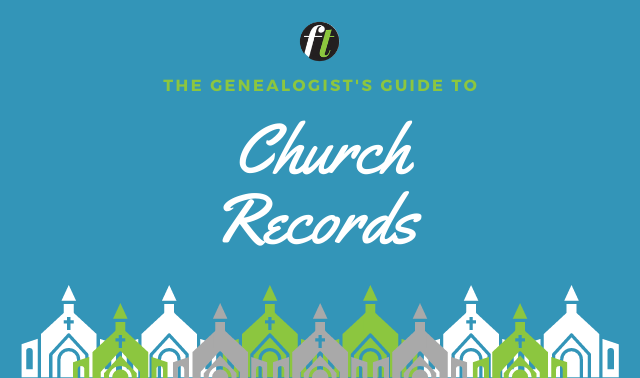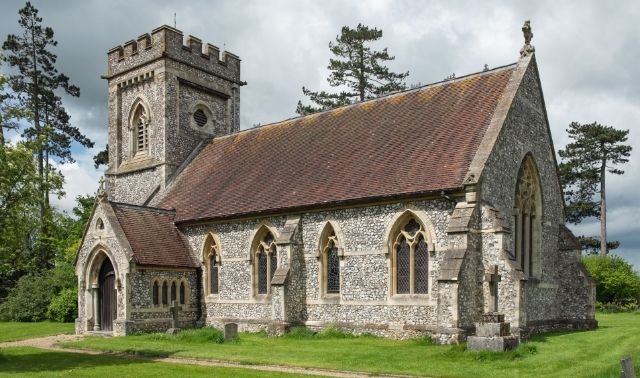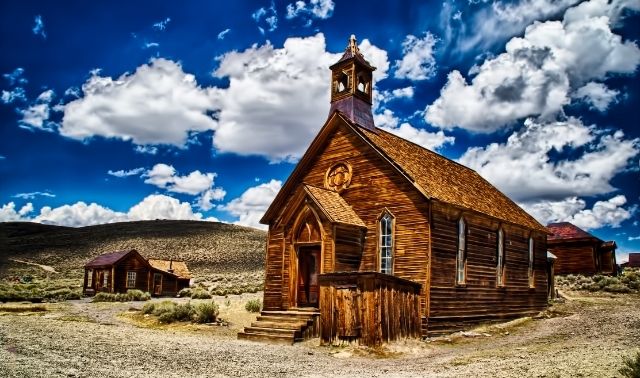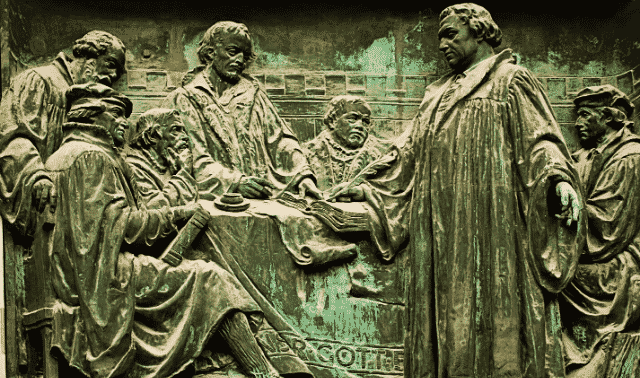Sign up for the Family Tree Newsletter! Plus, you’ll receive our 10 Essential Genealogy Research Forms PDF as a special thank you.
Get Your Free Genealogy Forms
"*" indicates required fields

George Fox, the founder of what became the Religious Society of Friends, was dissatisfied with established religion in England and urged each follower to find his or her “inner light” for direct communications with God. When the Friends were first called Quakers, it was meant as an insult. But you’ll tremble with joy if you find them among your ancestors due to the many methodical records this sect keeps. And whether or not you seek your own inner light, you’ll find that Quaker ancestors can brighten your lineage. Here’s a guide to key Quaker genealogy records and resources.
A History of the Quakers
When Fox started preaching in 1650, those who didn’t conform to the prevailing Puritan views were persecuted. During this so-called “Commonwealth” period, followers of Fox were jailed and had their meeting houses destroyed and property seized. Despite such measures, the Quakers gained converts throughout the British Isles among those drawn to the belief in an individual’s own ability to gain knowledge of God.
Quakers distinguished themselves in many ways: They dressed plainly, spoke bluntly (using what at time was the informal “thee” instead of the formal “you,” even when addressing royalty), rejected rituals such as baptism and Holy Communion, refused to take oaths, and practiced pacifism—even in times of war. Their worship meetings followed no formal program and could be quiet gatherings—until an individual’s “inner light” motivated him or her to speak.
Persecutions continued in England and the American Colonies until the passage of the Toleration Act of 1689, which gave religious nonconformists greater civil rights. By this time, Quakers had already begun streaming to a New World foothold acquired when King Charles II gave William Penn the land that became Pennsylvania in payment of a debt owed Penn’s father. Although the younger Penn created a colony where religious toleration for all faiths was the rule, his fellow Quakers—drawn mostly from the British Isles but also including German-speaking converts—held political power in Pennsylvania for most of the Colonial period. In addition, enclaves of Quaker settlers existed pretty much throughout the Eastern seaboard.
Many Quakers retreated from political power during the French and Indian War, when Indian raids in Pennsylvania caused settlers to cry out for a militia that the Friends could not countenance.
To this day, Quakers have remained America’s conscience in causes ranging from the abolition of slavery (a stance made official in 1775, when Philadelphia Friends were called to free their slaves) to the Vietnam War.
Along the way, splits developed in the Society of Friends, the most prominent occurring in the 1820s, when followers of Elias Hicks objected to greater emphasis on the Bible. (Traditionally, Quakers had placed the Bible secondary to individuals’ direct lines to God.) Ironically, those seeking to change Quakerism became known as Orthodox and those not wanting to innovate were called Hicksites.
Most splits were healed in a 1955 reunification of four of the five US yearly meetings (turn the page for more on Quaker meeting structure), though tensions still exist between liberal and conservative Friends. Today, about 90,000 Quakers reside throughout the United States, roughly a quarter of the sect’s worldwide population. Perhaps surprisingly, Alaska, not Pennsylvania, is the state with the largest percentage of Quakers in its population.
In Colonial times, however, Quakers formed a much larger proportion of the middle- and upper-class population. In addition to Pennsylvania, Rhode Island, New Jersey and North Carolina saw eras of Quaker influence. As a result, a fair number of Americans today have Quaker ancestors. William Wade Hinshaw, who compiled the six-volume reference Encyclopedia of American Quaker Genealogy (Genealogical Publishing Co.), estimates that half of all Americans with Colonial roots will find at least one Friend in the family.
What Records Quakers Kept
“Lucky are those of us with Quaker ancestors,” notes Kay Haviland Freilich, a certified genealogist and Quaker research expert. “The records of the denomination are among the most complete and most accessible church records available to today’s family historian.”
Before the 20th century, the Quaker equivalent of a congregation was called a preparative meeting. Two or more preparative meetings formed a monthly meeting (like a parish in other faiths). The term “monthly meeting” nods to the gathering’s dual purpose of worship and business, which includes serving as the major record-keeping unit for documents of interest to genealogists.
Several monthly meetings formed a quarterly meeting; these in turn reported to a yearly meeting (comparable to a diocese or synod). Although meeting names indicate their geography to some extent, you’ll want to research a meeting’s boundaries. The Philadelphia Yearly Meeting, for instance, covers parts of four states; Indiana’s monthly meetings are carved into five separate yearly meetings.
The Quakers are as rich in records as they are in eccentricities. One you should note before starting your Quaker research: Because many names of months and days are derived from what Colonial Friends considered pagan gods, they used ordinal numbers to indicate days and months in records: for example, 28th day 12th month, 1765. This can cause confusion because Britain and her Colonies used the Julian Calendar until 1752. Before then, March 25 was New Year’s Day and Quakers used “First Month” as the expression for March, along with the old year’s date for most of the month. So 15th day, first Month, 1733, would be March 15, 1734 to us. Transcribe dates as they appear in the original document, but add a note indicating the “translated” date.
Most Quaker records have been microfilmed and are available at repositories noted in the More Resources section and through FamilySearch and the Family History Library (FHL).
In addition to Hinshaw’s Quaker encyclopedia, you’ll want to consult the work of Quaker researchers Gilbert Cope and Albert Cook Myers, both members of the National Genealogical Society’s Hall of Fame. Much of Cope’s work, which includes family histories and abstracts of meeting minutes, is in manuscript form at the Historical Society of Pennsylvania in Philadelphia and on FHL microfilm. Myers donated much of his research, centered on Colonial Quakers, to the Chester County Historical Society in West Chester, Pa.; the FHL has some microfilm copies.
These are the major types of Quaker records you’ll find on FHL microfilm, as well as in the collections mentioned previously and in the resources listed below:
Births
Quakers didn’t practice baptism, but monthly meetings kept registers of the children born to members. The records identify the parents and often show the parents’ residence. Names of midwives and witnesses to the birth might be included.
Marriages
In addition to the couples’ names, marriage records usually include their places of residence and their parents’ names. You also may find the names of all who witnessed the wedding, with close family members names’ generally listed near those of the bride and groom (who also received a certificate signed by the witnesses). Some marriages are also mentioned in the business meeting records, along with terminology such as “married out of unity” (a Quaker marrying a non-Quaker) and “married contrary to discipline” (Quakers marrying outside the auspices of a meeting).
Deaths and burials
Monthly meetings kept registers of member deaths (normally naming the deceased’s parents) and separate records of burials in graveyards owned by the meeting. These records are especially important because most Quakers either have no tombstones or have markers bearing limited information.
Meeting minutes
The strictures of Quaker “discipline” have given researchers many a laugh at the types of offenses that resulted in sanctions for meeting members. Everything from “drinking to excess” to “use of plural language to a singular person” has been recorded in 18th-century meeting records—giving modern researchers a nice “slice” of their ancestors’ lives. But these minutes primarily record non-offenses, acting as diaries for the meeting and putting Quakers in the context of the larger community.
Certificates of removal
These records are a boon to genealogists trying to track ancestral moves from place to place. A devout Quaker would secure a certificate of removal from the monthly meeting he was departing to show the new meeting he’d left in good standing. Some meetings kept a register of issued certificates; others simply mentioned their issuance in business meeting minutes.
More Resources
Websites
- Cyndi’s List: Quaker
- Genealogy.com Quaker Forum
- Guide to Researching Quaker Records Using Hinshaw’s Encyclopedia of American Quaker Genealogy
- Quaker Corner
- Quaker Electronic Archive
- Quaker Information Center
- QuakerMeetings.com
- Religious Society of Friends
Publications
- Encyclopedia of American Quaker Genealogy, 6 volumes, by William Wade Hinshaw (Genealogical Publishing Co.)
- Our Quaker Ancestors: Finding Them in Quaker Records by Ellen and David Berry (Genealogical Publishing Co.)
- Quaker History journal (Friends Historical Association)
- Quaker Genealogies: A Selected List of Books by Thomas Hamm and Willard Heiss (New England Historic Genealogical Society)
Organizations and Archives
- Earlham College Library
- Friends Historical Library
- Friends University Library
- Haverford College Library, Quaker and Special Collections
- Quaker Archives and Library of Canada
A version of this article appeared in the October/November 2012 issue of Family Tree Magazine.




